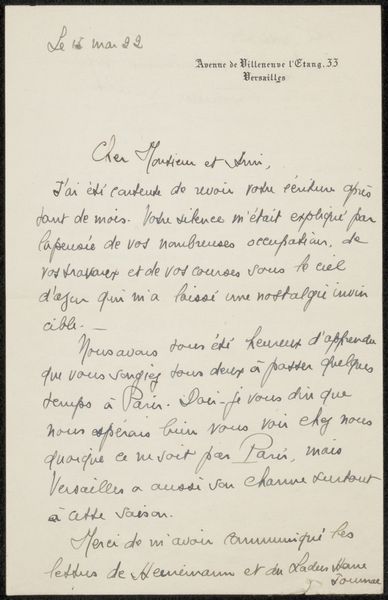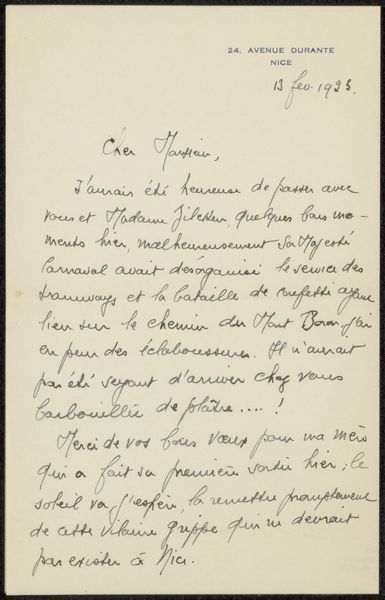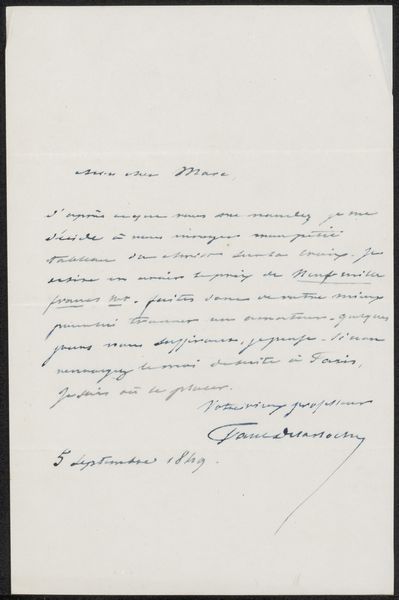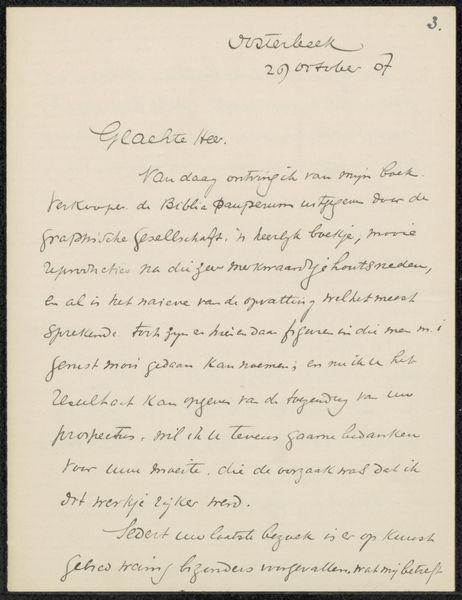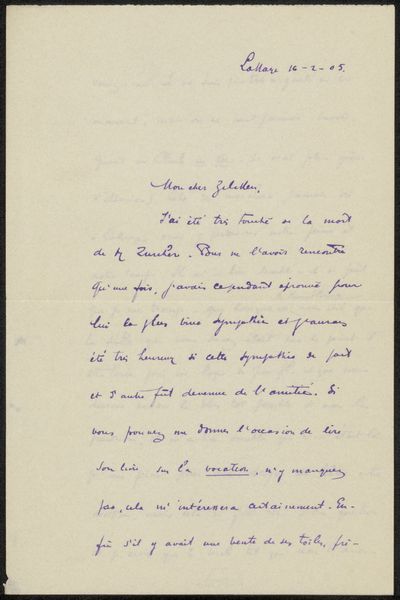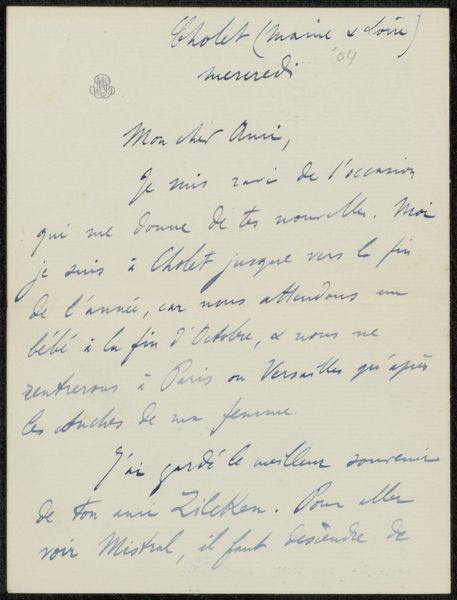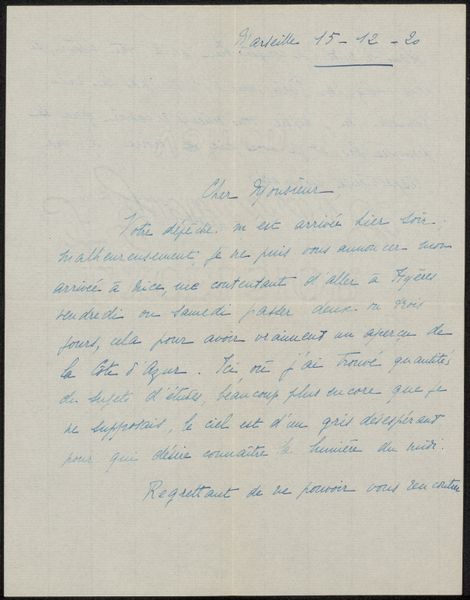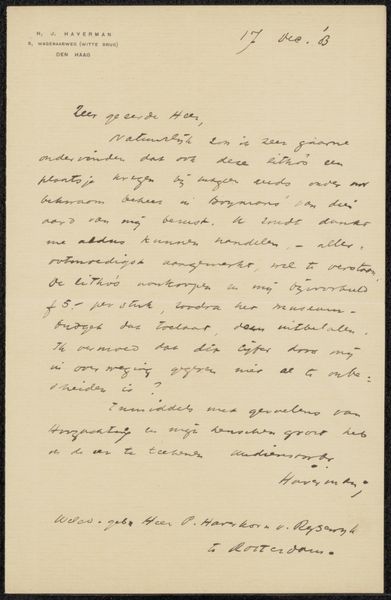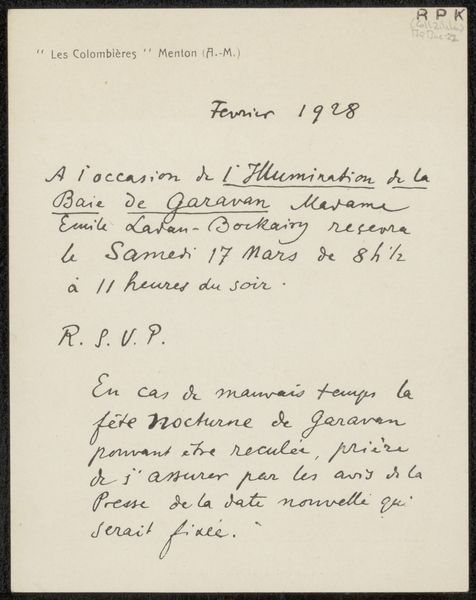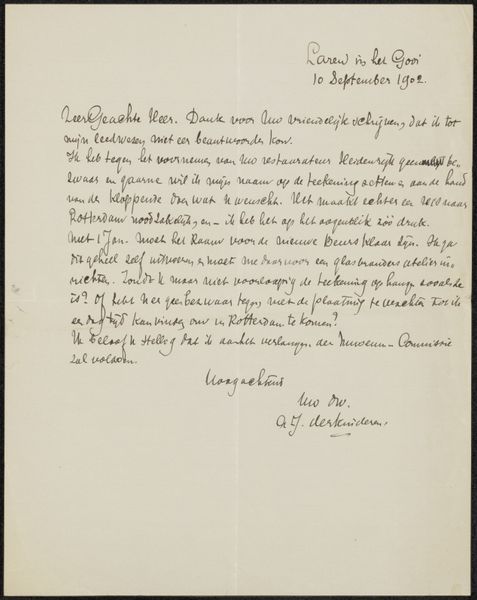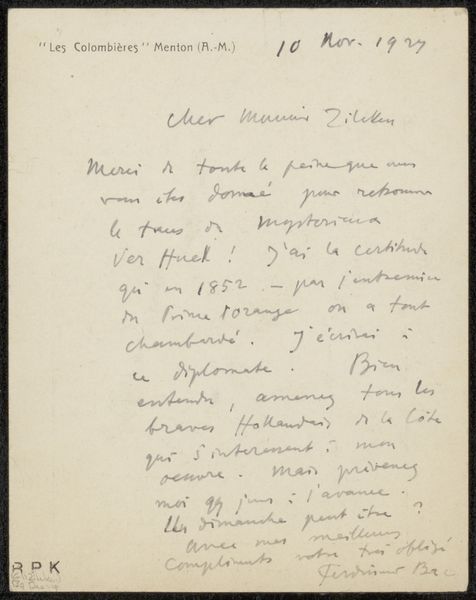
drawing, paper, ink
#
drawing
#
paper
#
ink
#
calligraphy
Copyright: Rijks Museum: Open Domain
Curator: Here we have "Brief aan Philip Zilcken," or "Letter to Philip Zilcken," possibly written between 1925 and 1927 by Jeanne Erlich. It’s crafted with ink on paper. What are your first thoughts? Editor: The script is fascinating. It reminds me that letters were functional and personal objects. This piece is simultaneously informative and beautifully expressive. There's an intimacy here that's quite striking. Curator: Indeed. This is no simple note; consider the materiality of the letter itself. The type of paper, the ink used, they were carefully chosen by Erlich and they reflect particular manufacturing practices and global commodity chains present in the interwar period. It challenges the notion of purely utilitarian communication. Editor: Absolutely, we’re seeing how Erlich interacts with the postal system. And where would she have likely composed it? We see 'Versailles' listed as a location. Thinking of the social and artistic circles she moved in, this wasn't merely a personal correspondence but also part of a network where information and ideas circulated. The recipient, Philip Zilcken, would have certainly appreciated not just the content, but the aesthetic quality. Curator: Precisely, it's art fulfilling a social function. Calligraphy was, and is, labor, requiring dedicated training, practice, and access to specialized tools. Editor: This letter format gives the author more space to convey feeling in a world demanding efficient impersonal interactions, especially considering it likely took time for this message to arrive. It becomes a public document when displayed, offering access to personal stories. Curator: Looking closely at the paper’s aging, ink bleed, it tells the story of how time and handling affect the physical integrity and, metaphorically, the content itself. Editor: By considering this letter, we consider both Jeanne Erlich’s message, Zilcken's position, the postal workers who delivered it and the broader cultural values attached to communication itself. Thanks to seeing the physical evidence of this letter, the dialogue opens into social commentary. Curator: Precisely. I’d agree with your assessment entirely!
Comments
No comments
Be the first to comment and join the conversation on the ultimate creative platform.
